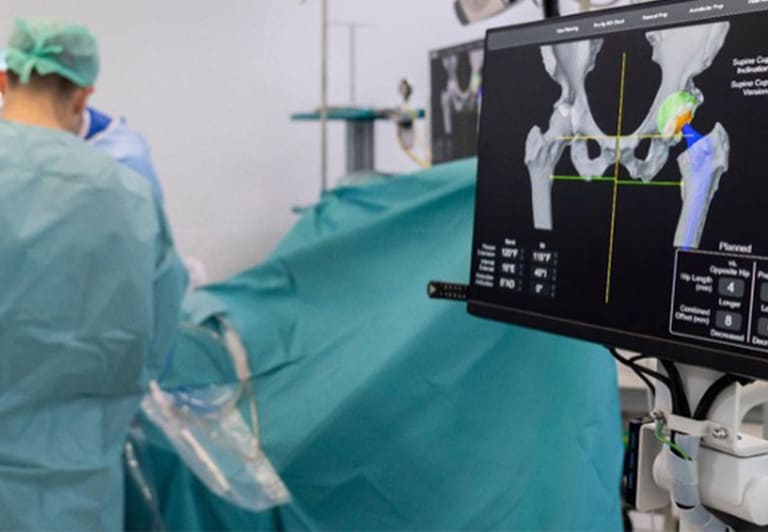As individuals reach their 40s and 50s, maintaining peak physical performance becomes more challenging, particularly when dealing with the wear and tear that often accompanies aging. For high-functioning individuals who prioritize staying active, whether through sports, physical labor or general fitness, spine health plays a crucial role. Minimally Invasive Spine surgery (MIS) offers an alternative to the traditional open surgery route, providing a way to address spinal issues without the long recovery times and invasive procedures typically associated with more conventional methods. Dr. Larry Davidson, an advocate for minimally invasive procedures, emphasizes the value of protecting spinal health through approaches that shorten recovery time, and help individuals maintain their athletic performance well into the future.
MIS offers significant advantages for those in their 40s and 50s who want to continue staying active, while avoiding the complications associated with more invasive surgeries. The procedure’s ability to address spine issues efficiently, and with less damage to surrounding tissues, allows individuals to return to their daily activities and athletic pursuits much sooner. This article looks at how minimally invasive spinal surgery can help people stay active and perform at their best as they age, highlighting the lasting benefits for those who lead high-performance lifestyles.
Understanding the Need for Spine Health in Later Life
As people age, the demands on their spines increase due to years of activity, whether it’s from sports, work or even just daily movement. The spine experiences natural degeneration, with conditions like herniated discs, spinal stenosis and degenerative disc disease becoming more prevalent with age. These conditions can significantly impact mobility, strength and overall function, making it more difficult to maintain an active lifestyle.
The focus on spine health becomes particularly important for those in their 40s and 50s, as maintaining mobility and flexibility is critical for sustaining peak performance. The choices made during this period can greatly affect long-term health and functionality. Traditional open surgeries, which often require extensive recovery times, may not align with the desire to maintain an active lifestyle. That is where MIS offers an effective solution, as it targets the problem, while minimizing downtime and physical disruption.
How MIS Helps Maintain Mobility and Flexibility
MIS is designed to treat spinal conditions with minimal tissue disruption, offering numerous advantages over traditional open surgery. One key benefit of MIS is the smaller incisions, which reduce muscle dissection and soft tissue trauma, leading to faster recovery times. For individuals in their 40s and 50s, who may need to return to physical activities quickly, these faster recovery times are crucial.
Staying mobile and flexible is key for anyone who relies on their body, whether for sports, fitness or physical work. MIS allows individuals to address spine issues, without sacrificing their ability to maintain an active lifestyle. Recovery is typically faster, and post-operative pain is often significantly reduced, allowing for a smoother transition back to activities like running, lifting or even more intense physical exercises.
Preserving Athleticism in the 40s and 50s Through MIS
As people reach their 40s and 50s, their bodies require more attention to maintain the level of performance they once enjoyed in their younger years. Spinal conditions like herniated discs or spinal stenosis can impair mobility, making physical activities more difficult. MIS presents a solution that not only treats the issue effectively but also helps preserve athleticism by promoting a faster return to activity. Athletes, in particular, benefit from this technique, as it minimizes downtime and allows them to get back to their routines faster than traditional open surgery.
Dr. Larry Davidson highlights the importance of staying active as a person ages, noting that maintaining an active lifestyle is essential for overall health. MIS enables individuals to address spine problems, while minimizing the risks of a prolonged recovery period, thus allowing them to stay physically active longer. By reducing the invasiveness of the procedure, MIS helps high-functioning individuals remain in top form well into their 50s and beyond.
The Long-Term Benefits of MIS for Spine Health
For high-functioning individuals in their 40s and 50s, spine health becomes a cornerstone of long-term physical well-being. One of the critical advantages of MIS is its ability to provide long-term relief from spinal conditions, while promoting quicker recovery. The less invasive nature of the procedure allows individuals to maintain or even improve their quality of life, without the debilitating side effects of traditional surgery. It is important for those looking to stay active in their later years, as they require a procedure that allows them to return to regular activities faster.
MIS offers not only the immediate benefit of addressing the spine issue but also long-term advantages by reducing the risk of complications and re-injury. Because the procedure involves minimal disruption to the muscles and tissues surrounding the spine, patients often experience a quicker return to normal function. In the long term, this can lead to a healthier, more active lifestyle that is less constrained by physical limitations. For athletes and individuals who prioritize physical health, these long-term benefits can make a significant difference in maintaining peak performance throughout their lives.
A Holistic Approach to Aging Well
As people approach their 40s and 50s, they often find themselves dealing with the cumulative effects of years of physical activity. The demands of maintaining athleticism during this stage of life can take a toll on the spine, making it essential to find methods of care that allow for continued performance. MIS represents a holistic approach to aging well, as it addresses spinal conditions with minimal disruption, and offers a solution for individuals who want to maintain an active lifestyle, without the prolonged recovery typically associated with open surgery.
The benefits of MIS extend beyond just spinal health; it also supports mental and emotional well-being by enabling individuals to maintain their physical fitness. For those who rely on physical activity for their mental clarity or emotional health, MIS offers a way to continue these activities well into their 50s and beyond. By making it easier to recover from spine-related injuries or conditions, MIS helps individuals maintain the athleticism they worked hard to build.
The Path to Peak Performance Later in Life
For individuals in their 40s and 50s, maintaining peak physical performance requires more than just staying active; it requires taking care of the spine, which serves as the foundation for mobility and flexibility. MIS provides a solution that addresses spine issues effectively, with minimal recovery time and less risk of long-term complications. It enables individuals to stay active, continue training and engage in physical activities for years to come.
Spine health continues to be a significant concern for those aiming to maintain athleticism. Minimally invasive surgery offers an effective solution. It allows individuals to address spinal conditions, without disrupting their active lifestyle, making it easier to preserve peak performance even as they age.




